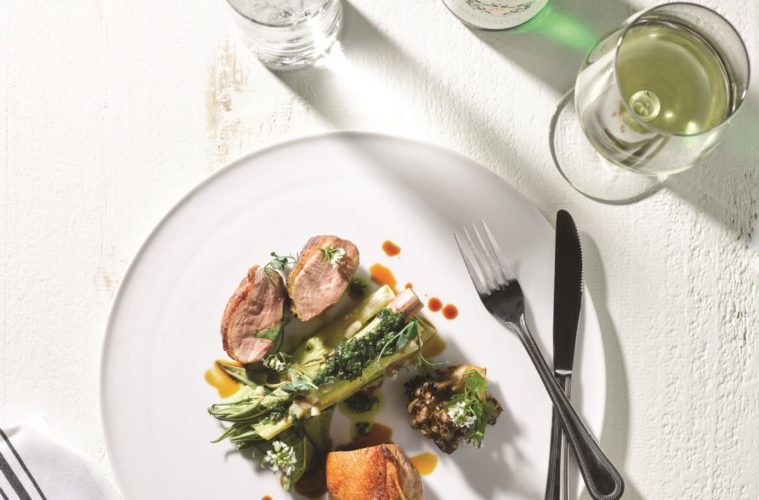Whether you’re a home cook or a restaurant chef, when it comes to summer food, the tastiest dishes include locally grown fruits and vegetables. Squeaky green zucchini, tender string beans, fluttery lettuces, and sweet corn harvested hours before eating have infinitely more flavor than their commercial counterparts, which must be harvested, packed, shipped, and shelved days before reaching the supermarket, let alone your plate. Just-picked produce also lasts longer and needs little fussing to bring out its natural essence—perhaps some peppery olive oil, sweet butter, or fresh lemon.
Here are five North Shore chefs who either have their own restaurant gardens or rely on local farms to fill their menus with the season’s bounty. They each share what they’re excited to receive and how they plan to serve it.
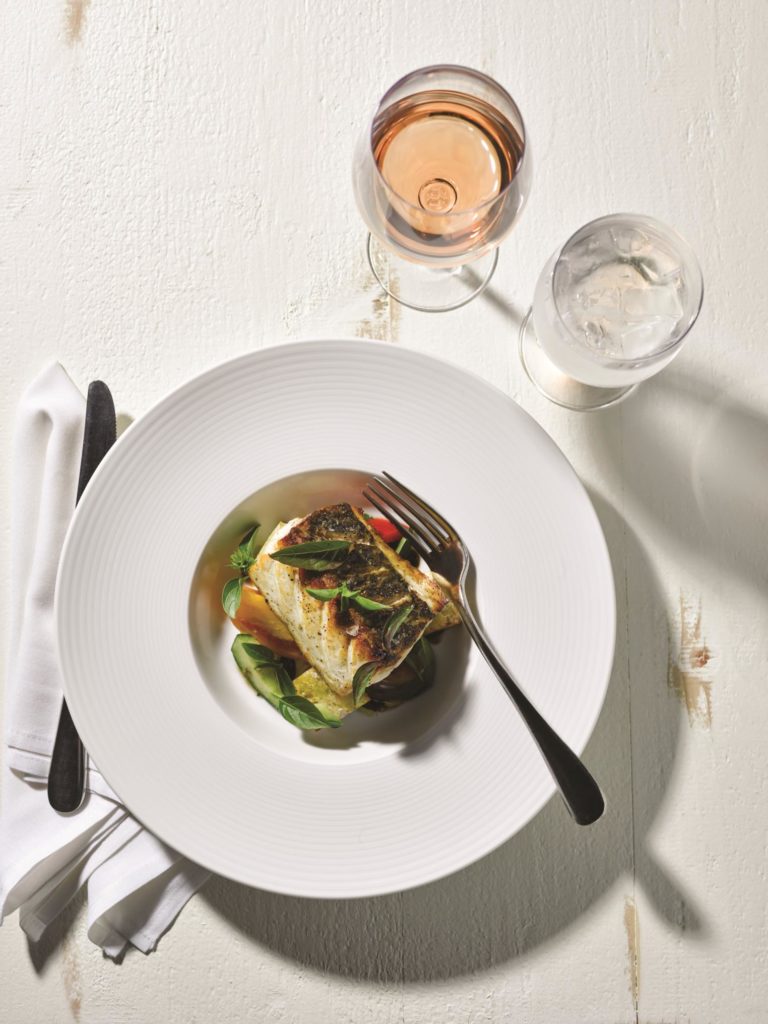
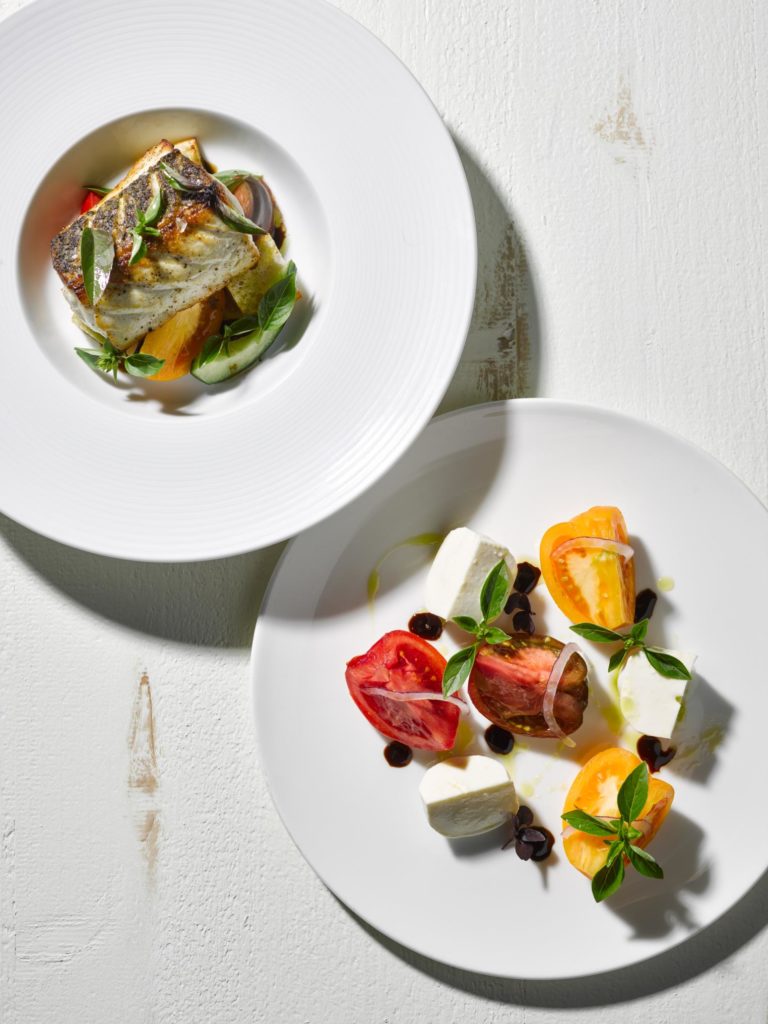
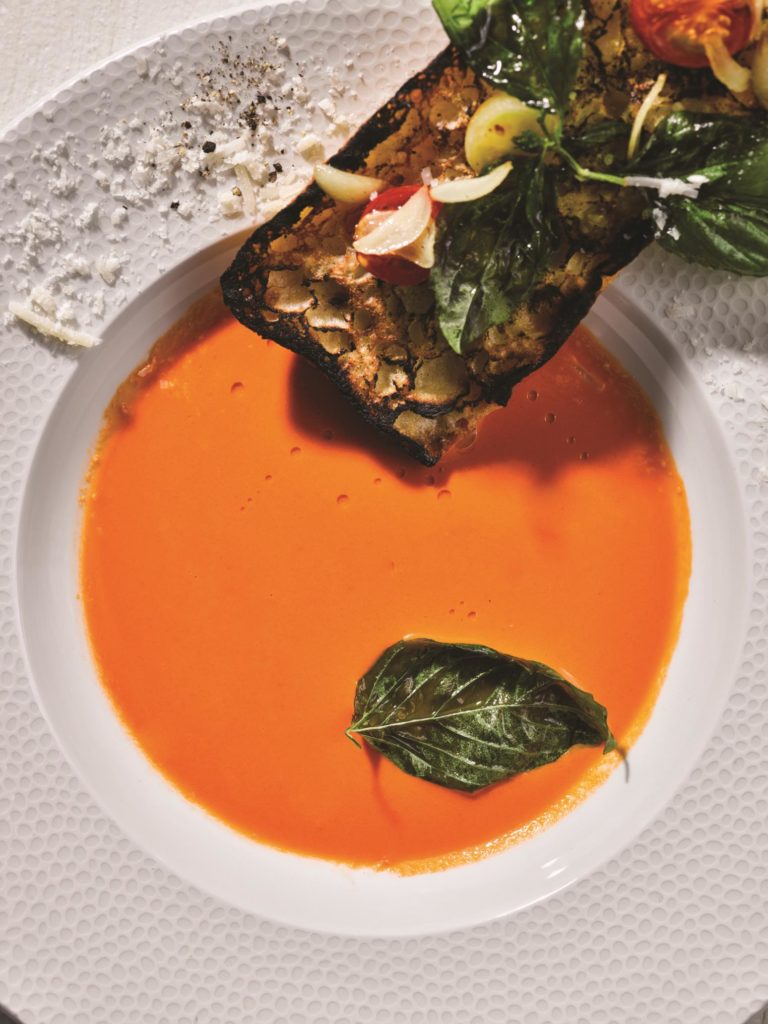
“When summer really hits, we get great corn,” says Mario Capone, culinary director for the Webber Restaurant Group’s Bancroft in Burlington and Bancroft & Co. in Peabody, which serves the sweet nuggets as a side dish. “We take the corn and roast it in the husk, char the cobs on the grill, and then strip the corn off the cobs and sauté it with butter. To make it fancy, we can add lobster and some herbs and serve it as an appetizer.”
The company’s 80-acre Gibbet Hill Farm in Groton grows over 100 different kinds of fruits and veggies for its restaurants. “My parents are from Italy and have a great garden, so growing up I learned to appreciate cooking with fresh-picked produce,” says Capone, who notes that the farm emails his chefs weekly to let them know what’s available to order.
When buttery, green fava beans appear, Capone plans to fold them into a risotto at Bancroft & Co., as well as puree them with garlicky basil oil to serve with bread. With the farm’s 40 different heirloom tomato varieties, he’ll make a rich tomato bisque. Tomatillos will become a salsa verde to serve with grilled meat, and vegetarians can order the Gibbet Hill Farm seasonal vegetable plate, a soft, charred array of what the garden yielded that week.
“Last year we had peaches,” says Capone, “which I sliced thin and served with burrata, chopped pistachios, pesto, and fennel pollen.” This year, it will all depend on the weather.
Paul Callahan, executive chef of Ceia Kitchen + Bar in Newburyport, relies on niche farmers and foragers for much of his produce, like the New Hampshire forager who brings him wild mushrooms and Japanese knotweed. “It looks like baby asparagus and has a lemon flavor,” says Callahan of the knotweed. “We sauté it and call it ‘fake asparagus.’ This year I might steam and toss it with butter, escargot, and grapes as a small plate.” Red pine cones are another wild edible Callahan favors. He buries the young cones in brown sugar to yield a syrup that he folds into ice cream.
“It’s not what you think,” he says, referring to the implied resinous taste. “It’s more subtle and really delicious.”
For microgreens, Callahan turns to the restaurant’s bartender, who also owns Dowie Farm in New Hampshire, where Callahan lives. “We often use the greens as garnishes, and if she has baby mustard greens, I’ll turn them into a salad or use them in a main dish, like duck.”
Callahan also favors “the carrot guy” at Three River Farmers Alliance in New Hampshire and often visits nearby Stout Oak Farm on his way to work for lettuces. “Their salad greens are the best—so fresh,” enthuses Callahan. “They cut them so early in the morning and the shelf life is great. They also do a super job with cherry tomatoes, which we like to get green and pickle to serve with [arctic] char.”
Tendercrop Farm in Newbury provides the raspberries Callahan plans to tumble over a goat’s milk panna cotta with candied fennel and teaberry syrup. “Teaberry grows wild,” says Callahan. “Remember teaberry gum? It’s the same thing and has this liquorish-cinnamon taste.” Last year Callahan made 25 pint jars of teaberry syrup to use as a mystery ingredient in desserts, as well as cocktails. He also taps birch trees to make a molasses-like birch syrup to lacquer duck and spike drinks. “We have so many young kids in the kitchen and I like to teach them about these ingredients that you wouldn’t normally use,” he says. It’s fun for them and fun for the customers, he adds.
Rodney Murillo, vice president–culinary director for the Davio’s Restaurant Group has an unlikely source for the local produce at Davio’s in Lynnfield: the Whole Foods rooftop garden across the street. “It’s about 4,000 square feet and sits on top of the market building,” says Murillo. “They have raised beds of dirt with irrigation and it’s all organic.”
Murillo will use those veggies on the luncheon menu in Lynnfield, serving the tomatoes with mozzarella and micro basil and baking baby eggplants with tomatoes and fresh ricotta. For the Romano beans, Murillo plans to braise them with onions and baby carrots to accompany pork belly. “It’s fun for the surprise factor we get to give our customers. We tell them their vegetables were grown across the street on the roof of that building. Talk about farm-to-table!”
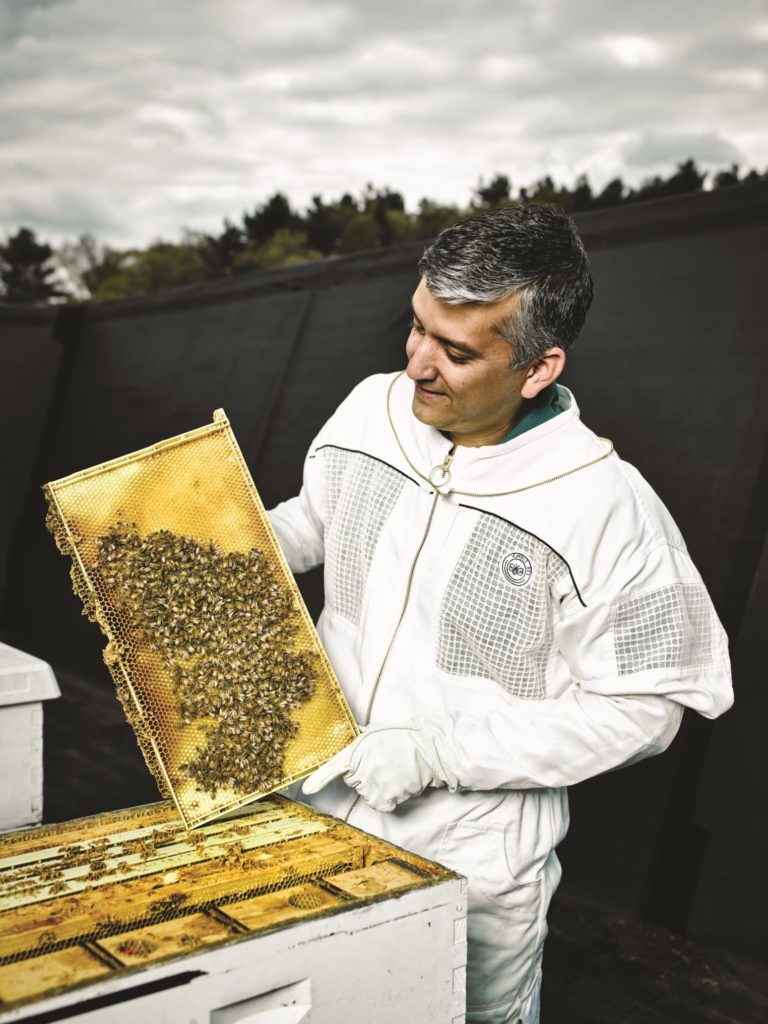
At L’Andana in Burlington, executive chef Nick Panagos has rooftop workers churning out a treacly treat for the restaurant—thick, golden honey. “We have six rooftop hives, and in prime honey season (summer) we make rooftop honey gelato,” says Panagos. “It’s our top-selling dessert and served with a drizzle of honey, honey brittle, and a honey tuile.”
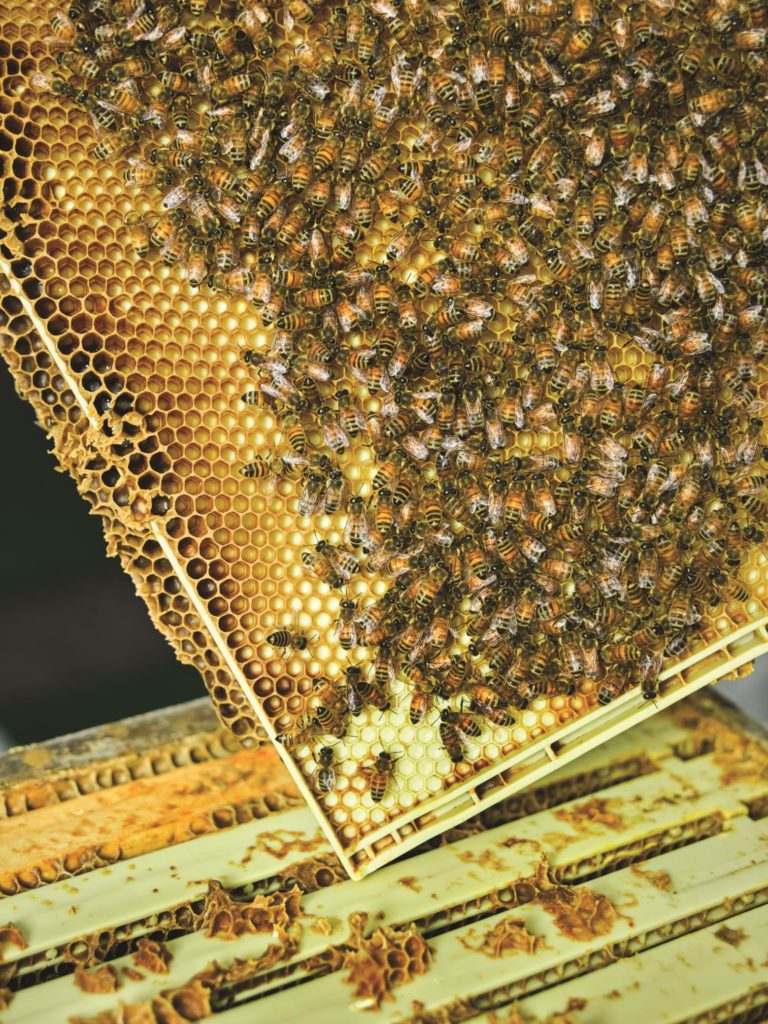
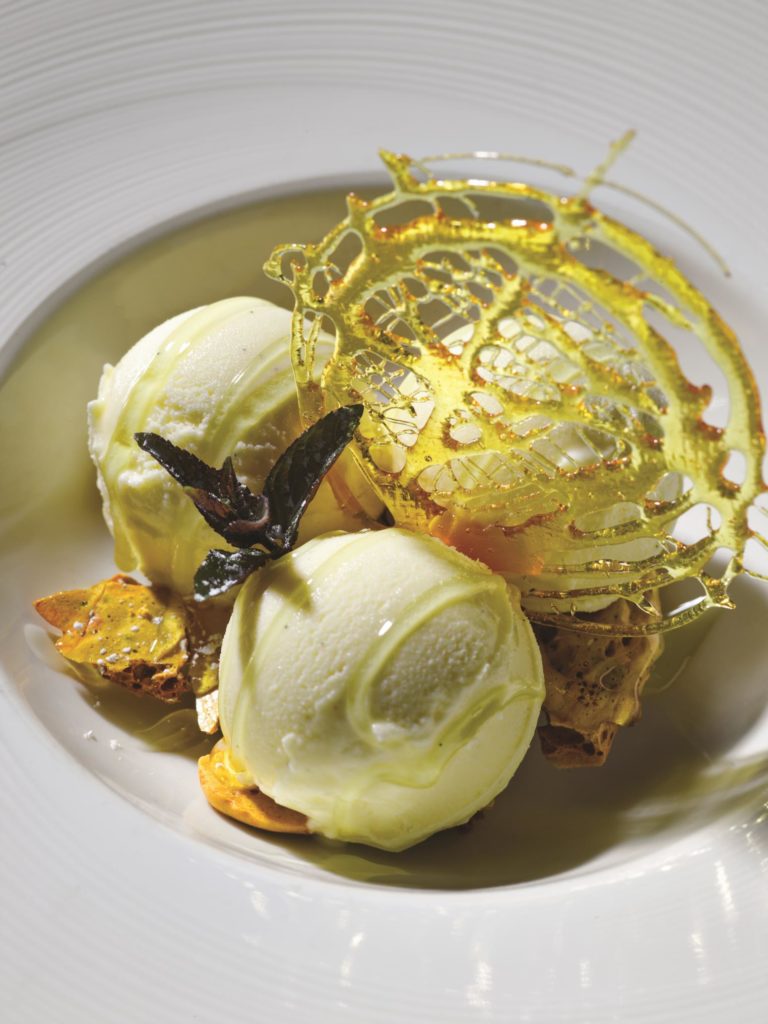
The bar also uses the honey, both in a lime-tequila cocktail and as a bar snack, served in the comb alongside grilled ciabatta and fresh ricotta. “We’ll probably make a honey-garlic sherry vinaigrette for salads this year,” says Panagos, and “maybe grilled pork belly glazed with honey chili glaze served with onion marmalade as an appetizer.”
But honey isn’t the only ingredient the restaurant produces. Running along the left side of the building are 20 raised beds brimming with fresh herbs and veggies. If the zucchini bed yields enough blossoms, Panagos will stuff them with ricotta and serve them fried and garnished with rooftop honey. Sungold cherry tomatoes will combine with fresh mozzarella and basil, and Persian cucumbers will become a feta and tomato salad with oregano vinaigrette. For vegetarians, he’ll offer an entrée of smoky, wood-grilled garden patch goodies. “All the staff and cooks tend to the garden,” says Panagos, who adds that the restaurant will give tours to guests, upon request. “Basically, we see what needs to be picked and come up with something to serve that day.”
Joshua Smith, chef-partner of Short & Main in Gloucester, patronizes as many farms as possible to find the perfect produce for his needs. “We’re known for doing really awesome simple but thoughtfully curated salads,” he says, “like roasted squash and cherry tomatoes in a tomato water–olive oil dressing.”
Iron Ox Farm in Topsfield supplies the chef with “insanely beautiful” lettuces, like speckled romaine and little gem, while other nearby farms, such as Alprilla Farm in Essex and Cedar Rock Gardens in Gloucester, provide veggies for appetizers, sides, and the restaurant’s dozen daily pizzas. When corn season arrives, Smith plans to roast it until caramelized and finish it with aioli, Pecorino Romano, and fresh chives. For the squash blossoms, he’ll fry them until crunchy and serve them scattered with capers and mint. “The herbs we get are super green, grassy, and fragrant versus the dull, bland versions from the supermarket,” says Smith. “The parsley is crunchy and it’s kind of like re-tasting that herb. The basil is really floral and we’ll put it on pizza and in sauces.”
When local eggplant appears, Smith plans to roast and scatter it over tomato pizza with ricotta salata. He’ll make a tomato salad with chevre and pesto and turn fresh berries into a black raspberry gelato and strawberry upside-down olive oil cake.
“When you’re getting such great product,” says Smith, “you basically just want to get out of its way.” bancroftandco.com, gibbethillfarm.com, ceiakitchenbar.com, davios.com/lynnfield, landanagrill.com, shortandmain.com

